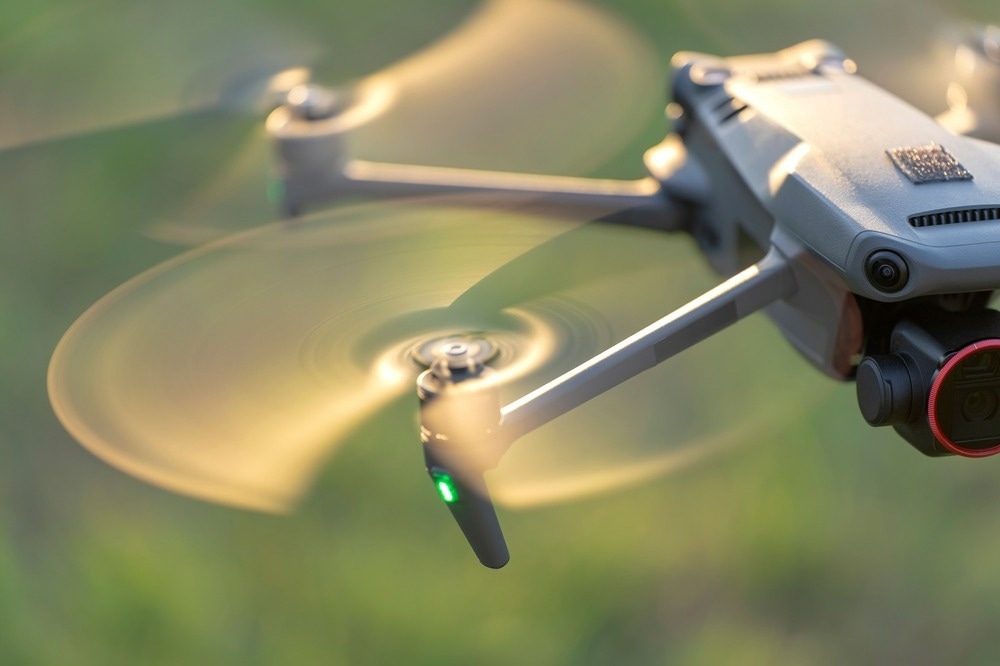How could drones revolutionize healthcare?
Drone usage in life-threatening conditions
Zipline: drone delivery of medical supplies
Challenges
References
Further reading
Drones in healthcare are gaining popularity for delivering medicines and other medical supplies to remote and underserved regions. Recently, Zipline, the leading US-based manufacturer and operator of delivery drones, has formed several partnerships throughout Africa for delivering vaccines, blood products, and other medical supplies to rural and remote areas.

Image Credit: Bilanol/Shutterstock.com
How could drones revolutionize healthcare?
Drones, also known as unmanned aerial vehicles, were originally developed for military missions in the USA and Britain during the First World War. In today’s world, drone technology has been harnessed to broaden its application in other vital sectors, including healthcare.
The emergence of telehealth and virtual care has made it possible to make reasonable diagnoses and provide healthcare solutions to hard-to-reach patients. However, the delivery of medicines, vaccines, and other medical supplies to remote areas and the collecting of biological samples for laboratory testing are the major obstacles against the widespread application of telehealth. Drones have presented incredible promise to overcome these obstacles.
Drones can be used for the rapid transportation of organs with high delicacy. This can potentially prevent any damage to the organs during transportation. Drones can be used to deliver medical supplies cost-effectively to people residing in remote areas and those affected by natural disasters or emergencies.
Drones can also be used inside hospitals for delivering biological samples or medicines from floor to floor or from building to building. However, poor GPS signals or radio frequencies could be an obstacle to successful indoor drone operations. Bluetooth technology may partially overcome this obstacle.
Drones can also be used for medical surveillance. In densely populated areas with a high prevalence of infectious diseases, drones with integrated cameras can take videos or pictures of on-ground situations to help healthcare experts identify and restrict the factors responsible for rapid disease spread.
Small drones with manipulator arms can be used to provide older people with medicines and help them in their day-to-day activities, such as picking up something from the floor or sorting laundry. Robotics play an important role in this type of work. Safety and reliability are two main things that must be considered while making robotic drones for older people.
Drone usage in life-threatening conditions
Drones have been used to deliver automated external defibrillators (AEDs) and save the lives of outpatients suffering cardiac arrest. An article published in the European Heart Journal in 2021 describes that the successful AED delivery rate by drone is 92%. The article also mentions that rapid drone-mediated delivery of AED, even before the arrival of an ambulance, has successfully saved the life of a 71-year-old man.
The drone took only three minutes to deliver AED to the patient. Such rapid delivery is particularly vital for keeping the brain of the patient alive as this delicate organ can only survive under perfused conditions (continuous blood supply). Any interruption in blood flow can severely damage brain tissues (ischemia).
Zipline: drone delivery of medical supplies
Zipline has formed a partnership with the government of Kenya for the storage and delivery of medical supplies in 16 counties in Western Kenya. This collaboration with the Zipline unmanned aerial system (UAS) is expected to provide a strong healthcare system that will provide timely healthcare solutions to most people living in the Lake Region Economic Bloc (LREB) counties.
In Rwanda, Zipline and Gavi have partnered to supply blood products and vaccines in rural areas. The project specifically aims to supply blood to transfusion facilities to save women experiencing postpartum blood loss and to supply rabies vaccines. It has been reported that the Zipline drone service has reduced in-hospital maternal mortality by 88% in Rwanda.
How we're using drones to deliver blood and save lives | Keller Rinaudo
The drones developed by Zipline can deliver 150 blood products per day. With logistic support provided by United Parcel Service of America, Inc. (UPS), Zipline drones can maintain proper storage conditions (temperature/humidity) during transportation to avoid any damage to the product.
Zipline drones are extremely ecofriendly. Powered by rechargeable electric batteries, these drones produce 30-times less carbon dioxide than other electric vehicles.
Zipline has extended its collaborations with other countries, including Japan, Kenya, Ghana, Nigeria, Ivory Coast, and the United States. The company operates in 3,000 hospitals globally, and the number is expected to reach 10,000 by the end of 2023.
In Malawi, UNICEF has launched a project in collaboration with Matternet, another US-based drone manufacturer, to speed up the testing of human immunodeficiency virus (HIV) infection.
Challenges
Some challenges may limit the large-scale use of drones in healthcare. Payload capacity, distance coverage, and battery life are some of these limitations that need to be taken care of. Another potential challenge is the lack of appropriate drone regulations. Before introducing drones in mainstream healthcare sectors, effective collaborations between aviation authorities and healthcare regulators are needed.
Policymakers should also develop appropriate drone regulations to ensure patient data security and health information privacy.
References
Last Updated: Jun 16, 2023